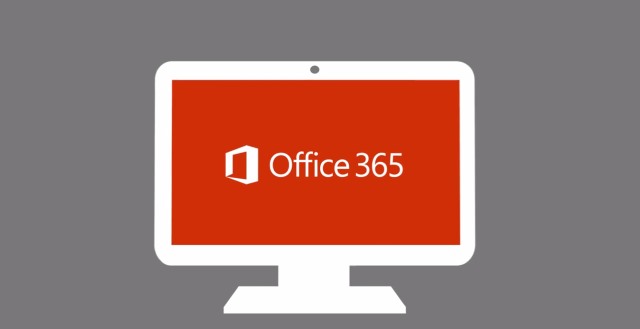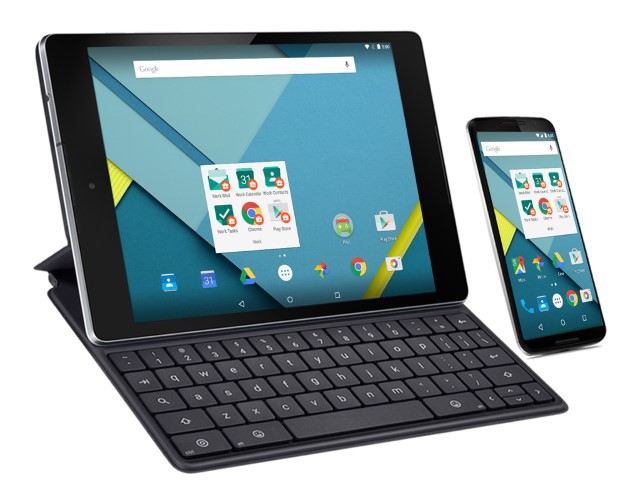
How personal devices are changing the American workplace
We're all familiar with the idea of BYOD and allowing employees to use their own devices for work. But how much impact is it having out in the real world workplace?
Workspace as a service provider Workspot has produced an infographic based on a survey of 500 US workers sheds some interesting light on things. High numbers of Americans are using their own devices for work, with 64 percent admitting that they sometimes do so. Those that do use their own devices do so for between 10 and 30 percent of the work day.

UK businesses risk data loss with BYOD policies
By allowing you to bring your own, unprotected mobile devices to work (BYOD), UK businesses risk losing data, a new research report suggests.
Forty percent of UK businesses have no security or policies in place to prevent unauthorised employees from accessing what they shouldn't, the research by Arlington Research and Acronis found.

Xirrus simplifies Wi-Fi access for BYOD
According to Gartner 85 percent of enterprises expect to have policies for allowing employee-owned devices in the workplace by 2020. This gives administrators a growing challenge in securing, supporting and managing them.
High-performance wireless specialist Xirrus is launching a new service suite called EasyPass, designed to manage mobile device connections to Wi-Fi networks in the simplest way and with minimal IT involvement.

How a growing cyber attack industry is good news for investors
Whilst cyber attacks continue to make the news, a new report published by Capital News Desk suggests that around 70 percent of organizations choose to keep their security incidents quiet.
It also reveals that around 73 percent of large organizations have been infiltrated by attacks. It's newer technologies like BYOD and the cloud that are seen as the biggest threats along with cyber crime.

The main obstacles to BYOD mass adoption
After nearly two decades of having smartphones and other devices that are exclusively for work purposes, there has been little headway in making Bring Your Own Device, or BYOD, a standard practice in the work place. In fact, it is nearly unheard of as a standard accepted business practice.
What exactly is preventing this convenient solution from becoming the norm? Here are a few of the major reasons why BYOD has yet to take off.

How mobile is changing the way we communicate at work
The rise of mobile device use and of BYOD policies in the workplace is bringing about a major shift in the way people communicate at work.
Email solutions provider Newsweaver has produced an infographic looking at the rise of mobile devices for business use. It also looks at how bring your own app (BYOA) and enterprise app use have different effects.

Containerization is a winning strategy for smarter BYOD management
Mobile devices have become the preferred means of accessing data and applications, wherever and whenever individuals desire. Today, on average, individuals have two to three mobile devices. Employees expect to use their own preferred tools and technologies to do their work; personal mobile devices are chief among them.
Hence, the BYOD movement is now mainstream and growing. In fact, Forrester estimates that 70 percent of mobile professionals will conduct their work on personal smart devices by 2018.

Microsoft brings mobile device management to Office 365
Microsoft has announced that mobile device management is now available in Office 365 for commercial customers. The feature is built into the office suite and allows administrators to control access to Office 365 data by Android, iOS and Windows Phone tablets and phones.
Security is very much at the heart of Office 365's mobile device management, and it includes a remote wipe feature. For businesses who have embraced the BYOD philosophy, this will bring peace of mind as it allows for the remote removal of Office and associated files even on personal devices.

Mobile app behavior presents hidden BYOD risks for enterprises
Allowing employees to use their own devices for work offers lots of benefits for businesses, but there are risks involved too.
A new report from software company Flexera and research specialist IDC says that enterprises are not doing enough to understand which mobile app behaviors hitting their networks and data are risky, nor are they testing apps for those risky behaviors to ensure proper enforcement of BYOD policies.

Wear Your Own Device is coming to the workplace, and enterprises need to start preparing today
Anyone interested in technology will know that the mobile boom has brought with it new considerations for businesses in the form or BYOD (Bring Your Own Device). Despite still being a concept that many companies are yet to fully grasp, it is about to be overtaken by a new mobile trend.
WYOD (Wear Your Own Device) is hot on its heels, as wearables and smartwatches continue to gain traction. To shed some light on the growth of WYOD and what businesses need to do to stay ahead of the curve, I spoke to Paula Skokowski from mobile file sharing provider Accellion.

The keys to a successful BYOD policy
The BYOD trend is something that often creeps up on companies as employees take the initiative in using their own kit. That can leave businesses with a BYOD environment but no proper policy.
There are many potential benefits to BYOD in terms of employee efficiency and morale, but that's of limited use if it puts the safety of commercial data at risk.

Google aims to secure enterprise BYOD with Android for Work
Android has successfully secured its place as the most used mobile operating system. With this in mind it should come as little surprise that more and more people are bringing Android devices into the workplace -- and for IT departments this can be something of a security nightmare. Today Google announces Android for Work with the aim of grabbing the BYOD (Bring Your Own Device) market and making Android more secure and manageable in the workplace.
What does this mean? Work profiles are being introduced to keep business apps and data separate from each other, so employees can use a single device to manage their personal work life. For both employer and employee this brings a number of advantages.

Enterprise app store streamlines BYOD adoption
Businesses are turning increasingly to mobile devices as means of boosting productivity, but if employees are allowed to use their own devices for work it can be difficult to ensure they use approved apps.
Licensing and compliance specialist Flexera Software has a solution in the form of its App Portal. This is a universal enterprise app store which allows self-service delivery across platforms.

5 reasons your company won't incorporate BYOD
The debate on both sides continues: the pros and cons of incorporating the BYOD concept into the workplace. BYOD has, indeed, become a hot topic where debates on both ends of the discussion-spectrum range from 'lower business costs and happier employees' to 'security hazards and added burdens on IT departments'. Even though proponents would argue that the benefits of incorporating BYOD into business environments outweigh any risks, one only has to examine those very risks to realize their potential for harm is too concerning and cannot just be swept under the proverbial rug.
Here are five reasons your company would want to think twice before adopting a BYOD strategy:

The key IT trends to expect in the year ahead
Now that 2014 is done and dusted, it’s time to look ahead and start thinking about what this year has in store.
We recently had the chance to hear from Getronics CIO Tim Patrick-Smith, who shared his thoughts on what will be some of the key IT trends in 2015.
